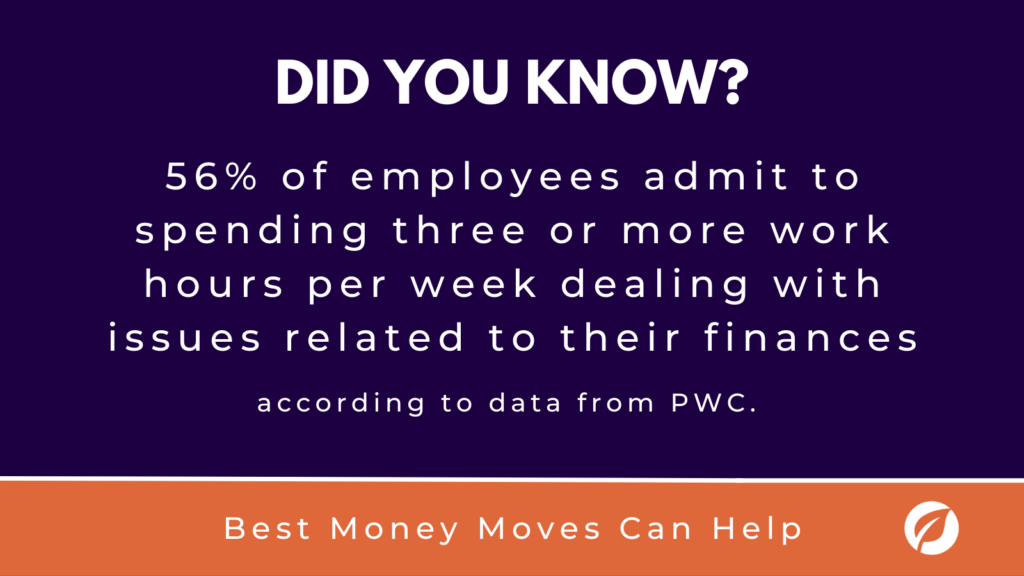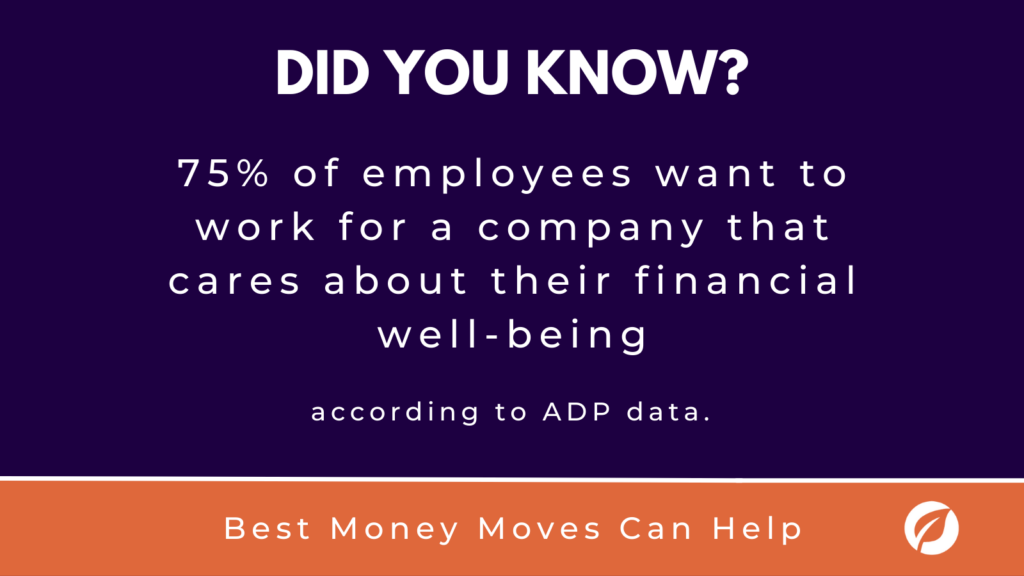5 surprising statistics about employee financial wellness. Employee financial wellness has a big impact on employee wellbeing and productivity. Here are a few key statistics to know.
Stress over personal finances continues to impact workers both in the home and at the office. Your workforce is suffering as a result.
In January 2023, PWC surveyed 4,000 employed U.S. adults about their personal finances and financial stress. The resulting answers reveal several alarming facts about how financial stress impacts overall employee well-being and performance.
Here are 5 of the most surprising facts from the survey — plus, what employers can do to help.

5 Surprising Statistics About Employee Financial Wellness
1. Employees are losing sleep over their financial situation.
In the past year, 56% of employees said that their personal finances had a negative impact on their sleep. Another 55% of employees said that their finances had a negative impact on their mental health. The most startling aspect of this fact is that these numbers are higher than during the height of the pandemic.
Stress has long been linked to physical ailments including insomnia, anxiety, restlessness and irritability — all of which may contribute to negative employee outcomes including lowered engagement and increased absenteeism. Targeting financial strain may actually help improve an employee’s overall wellness.
2. Financially stressed employees are more distracted at work and more likely to seek another job.
Among financially stressed workers, only 54% said that they felt a future at their current position compared to 69% amongst those who are not financially stressed. Additionally, financially stressed employees are twice as likely to be actively seeking a new position. Only around half of financially stressed employees report seeing a future with their current employer.
One of the bigger causes of stress for employees is organizational change, showing that stability throughout an organization company can pay dividends down the line. One way to reduce employee turnover is to curate a company culture that fosters employee resilience, even through times of financial uncertainty. Look to provide tools that address employee stress head-on and talk to your employees openly about the importance of financial well-being.
3. Cost-of-living is outpacing employee earnings.
59% of employees say that their salaries are not keeping up with the cost of living expenses. What’s more, the financial tools provided by their employers aren’t enough to bridge the gap. Most financial wellness benefits are geared toward future goals, such as building savings or retirement. While these can be helpful for long-term planning, they miss the mark for employees who are struggling with day-to-day expenses.
Twenty-eight percent of full-time employees report running out of money between paychecks. In addition to long-term help, employees need financial wellness benefits that address day-to-day financial challenges. Look for wellness solutions that can provide budgeting and debt repayment options in addition to planning for future goals. The right solutions can help your team avoid living paycheck-to-paycheck.
4. Employee performance consistently suffers as a result of financial stress.
Financial stress is a major distraction — 56% of employees admit to spending three or more work hours per week dealing with issues related to their finances. Data suggests that these stressed employees are also less engaged with their work overall.
One of the best ways to combat distraction is to provide financial wellness solutions that are personalized for each employee. Look for tools that cover a wide range of financial wellness topics, whether or employees are looking for help budgeting, saving, paying down debt or something in-between. Selecting tools with in-depth personalized advice can cut down the amount of time employees spend looking for help while still on the clock.
5. Employees are increasingly looking towards their employers when searching for help with their personal finances.
Some good news among more worrisome data: 74% of employees seek financial assistance when facing financial decisions, crises or life events.
Additionally, the stigma of asking for help with your finances has decreased. According to PWC data, 33% of employees said they would be embarrassed to ask for assistance compared to 42% in 2019. Push that number down even further by openly promoting your benefits offerings around the office, so that employees know help will be available when they’re ready to ask for it.
Best Money Moves could be the solution you need to support your employees.
Best Money Moves is a mobile-first financial wellness solution designed to help dial down employees’ most top-of-mind financial stresses. As a comprehensive financial well-being solution, Best Money Moves offers 1:1 money coaching, budgeting tools and other resources to improve employee financial well-being. Our AI platform, with a human-centered design, is easy to use and fit for employees of any age, right from their mobile phones.
Whether it be college planning or securing a mortgage, Best Money Moves can guide employees through the most difficult financial times and topics. Our dedicated resources, partner offerings and 700+ article library make Best Money Moves a leading benefit in bettering employee financial wellness.
To learn more about Best Money Moves Financial Wellness Platform, let’s schedule a call. Contact us and we’ll reach out to you soon.










